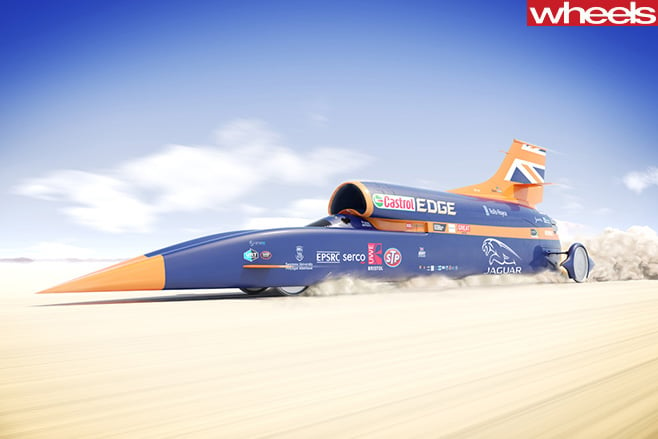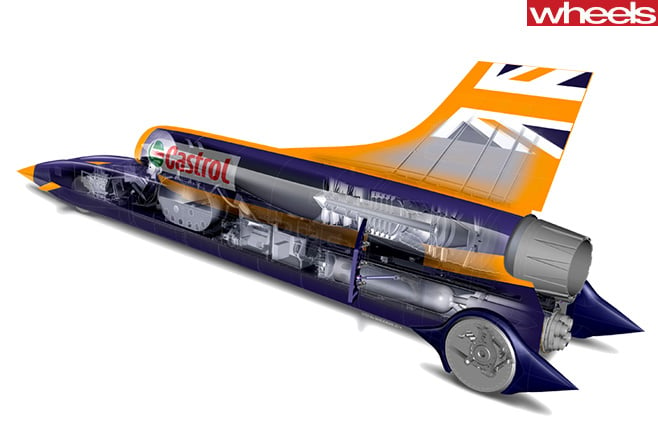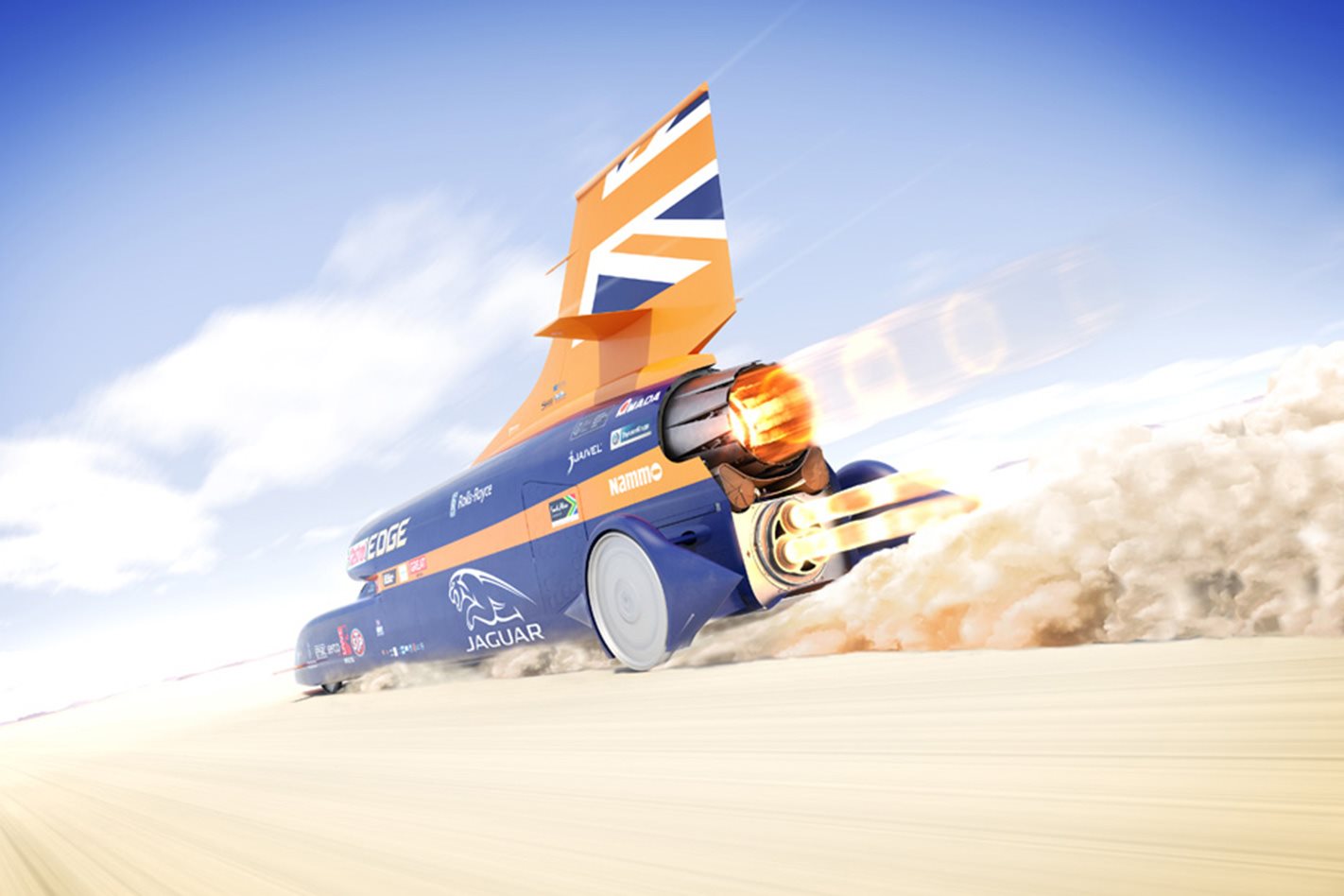Any vehicle designed with the sole purpose of breaking the World Land Speed record has to be a fairly special piece of kit. Here are 17 fast facts you can recite to your mates at the next BBQ.
The Bloodhound SSC team recently announced that they are looking to eclipse the 1287 km/h (800 mph) record in October next year and go on to break the 1609.3 km/h (1000 mph) barrier by 2018.
That’s no easy feat, and you can rest assured that any vehicle capable of those speeds doesn’t have your Skoda’s cupholders or run on everyday Dunlops. In fact, the SSC will hit 1600 km/h rolling on solid aluminium discs – technically wheels, not tyres – each weighing 95kgs. The Bloodhound’s engineers anticipate that the wheels will spin at more than 10,200 rpm at full chat (that’s four times faster than an F1 car) and be subject to over 50,000G. Struth!

- The Rolls-Royce EJ200 jet turbine produces as much thrust (90kN) as Eurofighter Typhoon while the rocket produces 120kN – more than eight times the power of an entire Formula One grid.
- Andy Green, the RAF Wing Commander who drove the current record-holding Thrust SSC and will pilot the latest vehicle will have to freewheel down to 1300 km/h before the air brakes can deploy, slowing the Bloodhound using its 20 tonnes of air resistance. Only at around 1000 km/h can the parachutes be deployed, any earlier and they’ll be ripped away by the force. The friction brakes are only applied around 320 km/h; while fast, it must seem like an eternity.

- Bloodhound has the equivalent of 100,670kW (equal to 170 F1 cars) and employs a 560kW, 4.2-litre V12 race engine just to drive the engine’s oxidizer pump.
- The steering wheel is made of titanium and has been custom-shaped using 3D printing techniques to fit Andy Green’s hands.
- The car will accelerate from 0-1000mph (1609.3km/h) in just 55 seconds, at which time it will be covering a mile every 3.6 seconds and outrunning its own sound waves.
- Each run, the Bloodhound will swallow 390 litres of fuel and consume 64,000 litres of air each second at full throttle (enough to suck out all the air of an average house in less than three seconds.).

- To reach V-Max, Andy will activate the Bloodhound’s rocket motor from a single cockpit switch, burning through almost a tonne of hydrogen peroxide oxidant and a tonne of highly combustible rubber
- The windscreen is designed to withstand an 800g bird strike at speeds of 1609,3 km/h (1000 mph).
- The parachute provides 9 tonnes of drag (more than a double-decker bus,) which means Green will be decelerating at 106 km/h (66mph) per second – which would feel like a crash in most people’s books.
- If the fit literally does hit the shan, Green has enough oxygen supply for three five-minute runs, with an extra half-hour in reserve.
- At speed, the temperature inside the rocket (3000C) will be twice as hot as the inside of a volcano.

- The heat in the interior cockpit will reach as much as 150C, due to the combined temperature from the desert sun, the Cosworth engine, the EJ200 rocket and the jet engine.
- The floorpan of the car is made from solid steel, as the sandblasting from the desert floor would destroy any other material and not survive each of the 12-mile runs.
- With more than 135,000 horsepower at his disposal, Green’s Bloodhound SSC boasts 25,000hp more than the QE2 Ocean liner.
- At 180 decibels the hybrid rocket could be louder than a 747 at take-off.
- Last but by no means least, the Bloodhound Project will produce the same carbon footprint as 4.1 lactating cows. Full gas!
Mission Control: Hakskeen Pan
After the shakedown tests are successfully completed, the Bloodhound SSC will then be transported first by air, then by road, to the team’s desert base at Hakskeen Pan, South Africa, via 16 container-loads of equipment setting up a self-contained village – complete with workshop and TV studios.





